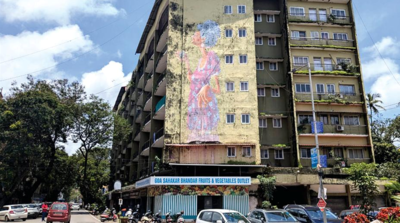ARTICLE AD BOX

Panaji: While today the aged Junta House govt building, here, is headed for demolition and subsequent reconstruction, built in 1966, it was once the tallest building in Panaji. When Goa was trying to find its feet in the post-Liberation era, Junta House was beyond a govt building, standing as a symbol of development, progress and stability.The six-storeyed wonder trails a rich Goan legacy.History enthusiast Sanjeev Sardesai said the building’s construction actually began pre-Liberation. It was constructed by Mohan Caculo and a contractor Vassudev Tamba. “It was primarily constructed to house the families of higher officials of the Goa administration as well as house the public offices and departments of the new UT,” he said.Milind Angle, a resident who lives in the vicinity, said the structure derived its name from Junta De Comercio Externo, a govt department of foreign trade.
“Their office was situated where Bombay Baazar is today. The department used to deal with imports. That structure was essentially a godown.”Angle said controversy erupted over what the building should be named after, as locals also proposed Janata House, which meant people’s house. He said the building had 16 commercial establishments on the ground floor, govt offices on the first three floors, and the fourth and fifth floors had flats for the govt officers.
“The sixth floor of the building was converted to an art and music space and named Swami Vivekanand Society,” said art teacher and art commentator Naguesh Rao Sardessai. “It also has the observatory of the Friends of Astronomy started by Percival Noronha, a former govt officer in the 70s,” said Sardessai. The building, once being the tallest, was ideal for an observatory due to lower disturbance from city lights, something which has changed since taller structures appeared on the scene.He said that the building has witnessed many agitations in the past. “It was pretty vibrant. Here we have a space for art and theatre on the terrace and agitation at the foot of the building,” Sardessai said.Locals said that the three lifts, transporting people to various floors, were once a fascination for the visitors. They were sometimes called ‘Moving Rooms’.Angle said, until the mid-1990s, Junta House was Goa’s core administrative hub of all major public offices — transport, sub-registrar, labour, etc.
“The official residences were later shifted to Altinho around 1980-81 due to the limited capacity of the building,” he said.City resident Raj Vaidya said, “This was the tallest building in Goa. People all over Goa used to come to see this building, to visit the observatory. After the Liberation, that building was a marker of progress and a way forward to a bright future.”The building was constructed by digging the ground 20 feet to build the pillars, to keep the building strong to survive an earthquake.A store owner Meera Narvekar said that the building was deemed unsafe because pieces of the building were dropping onto the ground. “Luckily, no one got hurt.”



.png)
.png)
.png)
















 1 hour ago
7
1 hour ago
7









 English (US) ·
English (US) ·